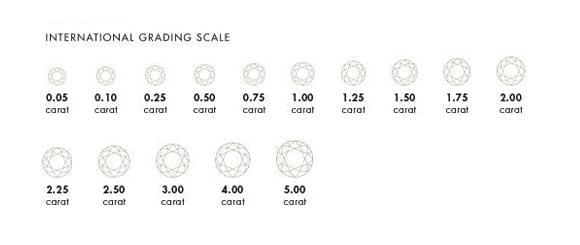Cut
The cut of a diamond impacts how efficiently it interacts with light. The cut of a diamond also relates to how well it is faceted, proportioned, and polished. The cut of a diamond has the most significant influence on its beauty and sparkle and is often regarded as the most essential and difficult of the 4Cs. Cut is distinct because it is the only one of the four Cs that is unaffected by nature. Investing in a well-cut diamond ensures maximum brilliance and beauty, making it a timeless symbol of elegance and sophistication.


Carat
Simply put, the carat weight of a diamond tells how much it weighs. Carats are used to measure the weight of diamonds. "ct" is the abbreviation for "ct." A metric carat is 200 milligrammes, about one-fifth of a gramme. Each carat is made up of 100 points, just like a dollar is made up of 100 cents. When you see "1.45ct," the diamond weighs one carat and 45 points.
Clarity
The clarity grade of a diamond shows how free it is of flaws and imperfections. Nature doesn' t make many "perfect" things. Most diamonds have marks on the inside called flaws and marks on the outside called blemishes. Trained diamond graders look at these traits under 10X magnification and judge them based on how many there are, how big they are, how they stand out, what they look like, and where they are. Understanding diamond clarity helps buyers appreciate the uniqueness of each stone and make informed decisions when selecting the perfect diamond for their jewelry piece.


Colour
Colour is one of the 4Cs, measuring how colorless a diamond is. Most "colorless" or "white" diamonds have tiny amounts of yellow, brown, or gray color. The scale of diamond colors below shows how close a diamond is to colorless. On a range from D to Z, a diamond with no color is a D, and a diamond with a "light" color is a Z. Most people think of diamonds as colorless, but genuinely colorless diamonds are very rare and only make up a small portion of all diamonds found. Because of this, most jewelry is made with diamonds that are close to colorless. Understanding diamond color empowers buyers to select a stone that meets their preferences for color and budget, ensuring their jewelry piece is as unique and beautiful as they imagined.